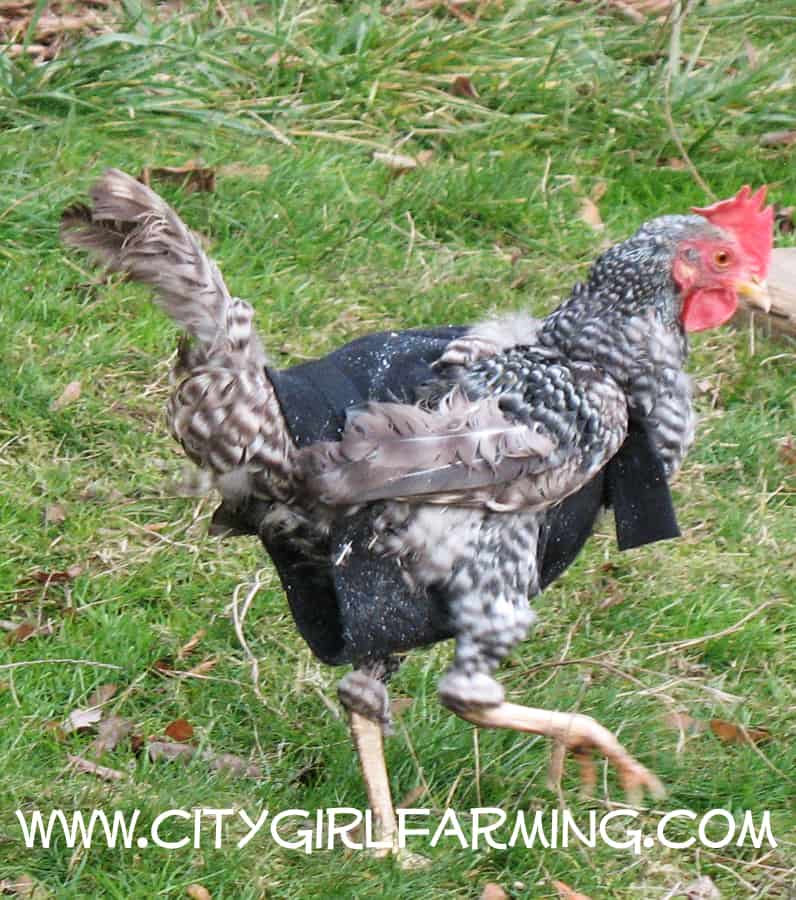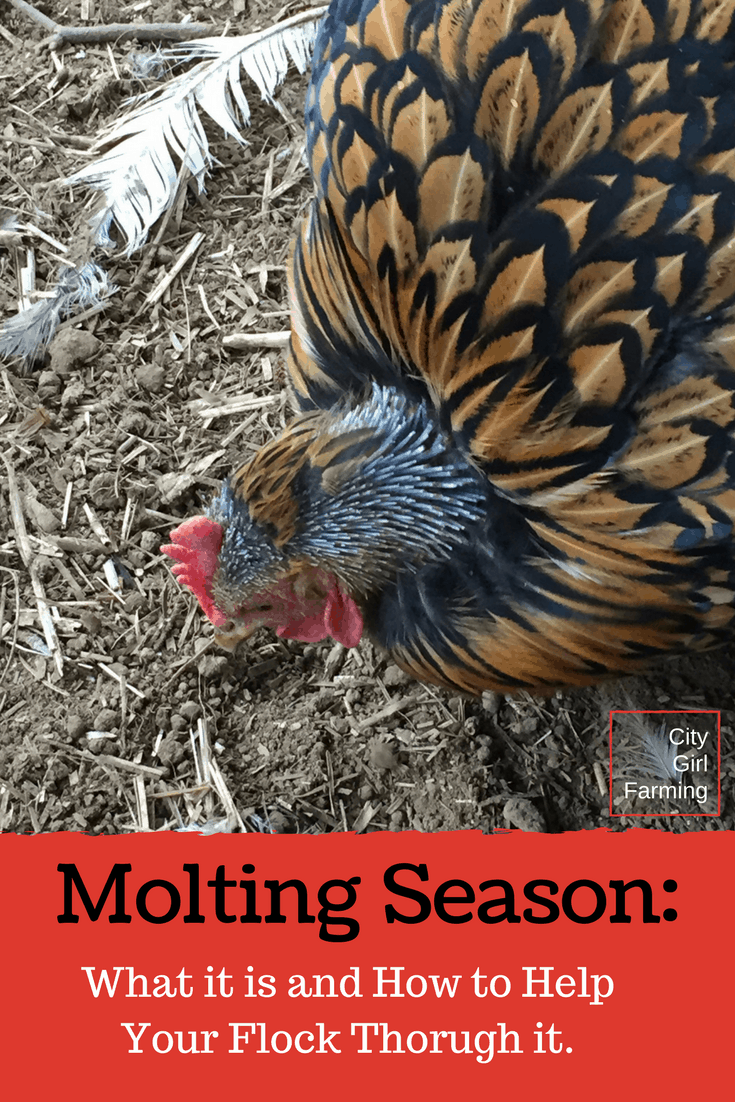Chicken Molting? (or Why are my chickens running around all naked?)
Ahhh…the sweet summer turns to fall…the days shorten, the crispy air smells of leaves, heirloom tomatoes are finally ripening…and my chicken yard looks like someone staged a pillow fight!
Yep, molting season is upon us. And my chickens are busy shedding their down coats in preparation for a fresh, new winter coat. If you’re a first time chicken owner and haven’t experienced molting yet, don’t worry. It’s gonna be okay. Your chickens haven’t come down with some terrible feather-shedding disease. And no, they won’t stay this bald and ugly forever.
What is Chicken Molting?
Molting is a normal part of chicken life involving shedding of old feathers and replacing them with new ones. The process can take up to a couple of months with some chickens only losing a few feathers while others becoming almost naked. Some will lose their feathers slowly, others, practically overnight.
Chicken molting generally happens in the late summer or early fall, and is usually brought on by the shortening of the days, although stressful situations and lack of food can bring on molting as well (commercial chicken farms often intentionally starve their birds to bring on a forced molt). During molting, chickens don’t lay many eggs. All their attention is focused on growing new feathers before winter sets in and freezes their naked little bodies, so be prepared for a sudden drop off in egg production. It’s also a difficult time for them, as it requires a lot of energy to re-grow all those feathers.
As they re-grow their feathers, they’ll start getting what looks like porcupine quills. This is just the feathers re-growing and it’s nothing to be concerned about.

How to Help Your Flock Through Molting
Although there’s not much you can do about it while the whole process runs it’s course, you can help your girls out by feeding them small amounts of extra protein to give them some added nutrition while they work at the job of their spectacular fall-make-over look. I feed my girls bits of shredded cheese, canned tuna, scrambled eggs or plain yogurt. Some people switch to a higher protein feed (like a meat bird feed instead of layer feed) to help them out during this time of year. Just don’t go overboard with the snacks (even if you feel sorry for them because they look like something only a mother could love). A LITTLE extra protein is good. They don’t need much (maybe a tablespoon or so per day).
Keeping their environment as stress free as possible will help them out tremendously.
Should You Make them Sweaters to Help Them Stay Warm?
I get asked this question often. The short answer is NO. This is a normal cycle for a hen. They will survive. Clothing is not natural for chickens (even though a whole industry of chicken-related things like sweaters and diapers and such has blossomed).
BUT. Having said that…and it’s something I FIRMLY believe….there was one year when one hen molted REALLY LATE and really hard and was freezing. So, I made her a temporary fleece pullover to help her for a week or so while she re-grew enough feathers to stay warm. (I brought her in the house for a moment (in a crate) and it took her over an hour to stop shivering from the cold….) So, yea. I’m not heartless. But as a (pretty) hard and fast rule, your flock will be JUST FINE on their own and don’t need any of our clothing and accessory help to make it through the shedding season.

What About the Chickens that Don’t Molt?
If you have new chickens (born this year), they will most likely skip molting all together this first fall, as molting usually follows the end of a high egg-laying season, and most new hens will lay really well through their first winter without dropping production much.
You might also notice that some of your chickens molt heavily and some barely at all. Some might also lose their feathers seemingly overnight, while others will do it so gradually you’ll barely notice. ALL OF THAT IS NORMAL. There is no set way this thing will go down and each chicken is unique and will go into and out of molting season in their own unique way.
Regardless of how fast or slow or how, well, less-than-lovely your chickens might look, this season will pass and they will eventually be more beautiful and shiny than before.
Here’s to a quick molting season!
PS if you want to know more about Olivia’s stylish fleece pull over, you can see the story here.
